 Anxiety is such a nebulous word, but worry is tangible. Take Louis*. Louis is 28 years old and in charge of a small team of people in the NHS. One of Louis’s team, let’s call him Phil, is slacking off at work. He consistently arrives late and does as little as possible. This is complicated by the fact that Phil’s previous line manager, Geoff, was also Phil’s friend, and so would turn a blind eye to Phil slacking off. Louis, the new line manager, needs to step in and have a meeting with Phil next week, setting out what’s expected of him in his role, and also warning Phil that if he isn’t able to fulfil these duties, there might be consequences. Simples, right?
Anxiety is such a nebulous word, but worry is tangible. Take Louis*. Louis is 28 years old and in charge of a small team of people in the NHS. One of Louis’s team, let’s call him Phil, is slacking off at work. He consistently arrives late and does as little as possible. This is complicated by the fact that Phil’s previous line manager, Geoff, was also Phil’s friend, and so would turn a blind eye to Phil slacking off. Louis, the new line manager, needs to step in and have a meeting with Phil next week, setting out what’s expected of him in his role, and also warning Phil that if he isn’t able to fulfil these duties, there might be consequences. Simples, right?
Well of course not. Not for Louis, and not for many of us dealing with whatever random events life throws our way. Which is why Louis is worried. He’s so worried that even though the meeting is a week away, Louis is intensely anxious about the situation every time he thinks about it. He knows from past experience that he’s not going to be able to enjoy his weekend much, if at all, because all that empty time will give him hundreds of opportunities to rehearse the worries, over and over again. He says this is something he’d like to work on in our session, so I introduce him to Check The Facts, a DBT, emotion-regulation process or “dialogue” to see if this might in any way help him with his worries.
Check The Facts involves focusing on cognitive biases and distortions, looking at ways in which we might be finding a problem or a threat when one isn’t necessarily there. As David Carbonell puts it in his book The Worry Trick: the problem with worry that is we experience doubt (“I don’t know what the outcome of [something] is going to be…”) as dangerous.
Think of something that is worrying you at the moment, and ask yourself this question: Is this a problem existing in the external world right now? If so, can I do something to change it? Most likely a sticky, chronic worry will get a “no” on both counts, or a “yes” to the first, and a “no” to the second.
What a lot of therapy does, not just standard CBT or DBT, is interrogate and cross examine these worries in a bid to dissolve some of the skanky jeopardy coating each thought [here’s a short tapescript of me doing this with Louis].
More often than not, after an hour of working away at a crippling worry (and this is certainly the case with Louis) client and therapist might both be a little depleted by the fact that not much has occurred in terms of weakening the vice-like grip of the Worry. This is not however how things are protrayed in CBT or DBT manuals, where all therapist dialogues with their patients end with an implicit, but often explicit, self-congratulatory “victory” over Worry, and a big hearty slap on the back for the therapist, who has clearly shone with his skills and perceptiveness, shone in a way that you might recognise if you’ve ever read a page of Greek philosophy. Which is to say, shone like Socrates. Specifically, Socrates as Columbo whose most irritating technique if you remember was to leave a room and then return, with a befuddled look on his face, scratching his head, and saying “Just one more thing…”, then following this up with a seemingly innocuous question. The guilty person, aka The Worrier, by then eager to see the last of this schmuck, would quickly answer, and later find out that the question was not so innocent after all, when Columbo returned to say “You’re under arrest.” Crime solved, another win for Law and Order.
Check The Facts is a little bit like having your own Socrates on a piece of paper. It asks you a series of questions, and as you work through the questions, their reformulating power is designed to break down your worries, or at least reduce the extent of this worried feeling until it is at a level that sinks into the background rather that stalks your head like a heartless psychopath.
But this, and standard CBT, often don’t work. And the reason they don’t work is that these therapies target the cortex area in the brain, or System 2 as Daniel Kahneman calls it in Thinking Fast and Slow, rather than System 1, the Amygdala whose role is to attach emotional significance to situations or objects and to form emotional memories, both positive and negative.
THE PROBLEM WITH THE AMYGDALA
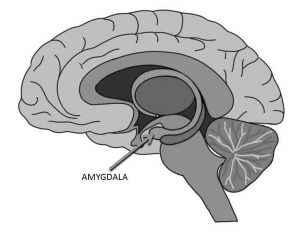 The problem with the amgydala is that unlike the cortex, all of its work is largely unconscious, attaching anxiety (negative emotional valence) to situtations the way the liver aids digestion, or the pituitary gland regulates our hormones. And it happens so quickly. Like a hyper-vigilant set of all-seeing, all-hearing, all-sensing cameras, as soon as the amygdala picks through its lateral nucleus and thalamus on something that may indicate a certain level of danger or harm (and remember, doubt, which is to say anything ambivalent, ambiguous, unsettled, which are most things, signals to a mind predisposed to anxiety DANGER). Then, in less than a tenth of a second, much quicker than the danger signal takes to reach the more measured, “thinky” parts of the brain, the amygdala is already signalling to the sympathetic nervous system (SNS) and hypothalamus to provide a surge of adrenaline, increase blood pressure and heart rate, create muscle tension, and get us ready to self-protectively fight, flee, freeze, or worry.
The problem with the amgydala is that unlike the cortex, all of its work is largely unconscious, attaching anxiety (negative emotional valence) to situtations the way the liver aids digestion, or the pituitary gland regulates our hormones. And it happens so quickly. Like a hyper-vigilant set of all-seeing, all-hearing, all-sensing cameras, as soon as the amygdala picks through its lateral nucleus and thalamus on something that may indicate a certain level of danger or harm (and remember, doubt, which is to say anything ambivalent, ambiguous, unsettled, which are most things, signals to a mind predisposed to anxiety DANGER). Then, in less than a tenth of a second, much quicker than the danger signal takes to reach the more measured, “thinky” parts of the brain, the amygdala is already signalling to the sympathetic nervous system (SNS) and hypothalamus to provide a surge of adrenaline, increase blood pressure and heart rate, create muscle tension, and get us ready to self-protectively fight, flee, freeze, or worry.
When we’re experiencing this very primal fight, flight, or freeze response, the amygdala is in the driver’s seat and we’re passenger. That’s why, in emergency situations, we often feel as though we’re observing ourselves responding rather than consciously controlling our response. The reason why we don’t feel in control in these moments, or in control of our anxiety is because, as Joseph LeDoux explains: the amygdala isn’t just faster—it also has the neurological capability to override other, slower (System 2) brain processes. For this reason, strategies for coping with amygdala-based anxiety are essential, even though cortex-focused approaches are more commonly offered in treatment.
Perhaps one of the reasons for focusing on cortex-focused, thinky-talky, approaches is that a) they make sense to the part of the brain that deals in making sense of things (the cortex), but also because b) working with the amygdala often involves some form of exposure therapy.
If you want the amygdala to change its response to an object (for example, a mouse) or a situation (such as a noisy crowd), the amygdala needs experience with the object or situation for new learning to occur. Experience is most effective when the person interacts directly with the object or situation, although observing another person has also been shown to affect the amygdala. You can reason with the amygdala for hours, but if you’re trying to change amygdala-based anxiety, that tactic won’t be as effective as a few minutes of direct experience will be.
Unfortunately, we all typically try to avoid such experiences, and this avoidance prevents the amygdala from forming new connections. Returning to the example of the mouse, you may even try to avoid thinking about mice, because just the thought of a mouse can cause the amygdala to react, initiating an anxiety response. The amygdala tends to preserve learned emotional reactions by avoiding any exposure to the trigger, which decreases the likelihood of changing that emotional circuitry. Being the ultimate survivalist, the amygdala is purposely cautious, and its default setting is to organize responses that decrease your exposure to triggers. But again, amygdala-based anxiety responses won’t change if the amygdala is successful in avoiding triggers.
Often the amygdala in these narratives is presented as the flibbertigibbet in contrast with the Cool, Calm and Collected 007-like Cerebral Cortex with its highly impressive Executive Functioning, a skill no other animal on this planet possesses. But as Catherine Pittman explains because the frontal lobes of the cerebral cortex are so good at helping us to anticipate the results of situations, plan our actions, as well as initiate responses, and use feedback from the world to stop or change our behaviours, “these impressive capacities also lay the groundwork for anxiety to develop”.
So what can we do?
AHA! THREE STEPS FOR HANDLING CHRONIC WORRY
 Here’s your proverbial AHA! moment in dealing with worry. This is an acronym you can use to help you remember a couple of steps to take when you’re being bothered by worrisome thoughts.
Here’s your proverbial AHA! moment in dealing with worry. This is an acronym you can use to help you remember a couple of steps to take when you’re being bothered by worrisome thoughts.
- Acknowledge and accept.
- Humour the worrisome thoughts, as you would humour an annoying sexist, racist, homophobic Uncle who sat down next to you at a wedding.
- Activity—resume doing value-driven activities, activities that are important to you in your “external world” (and take the worries with you if necessary).
Here’s a detailed explanation for each step of AHA!
1) ACKNOWLEDGE AND ACCEPT
What’s to acknowledge here? That you’re having a worrisome thought, once again! It might be annoying to find it back in your head. You might want to refuse to acknowledge its appearance because it seems so unreasonable that, once again, this thought is occurring to you. It offers nothing of value, and you’ve dismissed it so many times before, yet here it is again, serving no useful purpose, bothering you like a spam e-mail that shows up in your mailbox every hour. Or maybe, even though you’ve had lots of experiences with these worrisome thoughts and have never been harmed by them, you still respond with fear because you wonder, What if this is the time that something happens? and you get tricked by that thought into taking the content seriously. You wish you could be perfectly sure that the thought is false, for all time, but of course you can’t have that certainty.
So, okay—you can simply acknowledge that you’re having another occurrence of a worrisome thought. Maybe you recognized it by the “what if” introduction, or maybe you didn’t catch on until you considered the content it was offering you, but okay. You have a brain, so you have thoughts. No need to try to ignore it, or pretend it’s not there. There’s nothing wrong with ignoring it, really—but if the effort you make to ignore the thought keeps bringing it back to your attention, then trying to ignore the thought isn’t helping. Here you are, having another one of the many, many thoughts you will have today, and this one happens to be a loser.
Whom do you acknowledge it to? Usually just yourself. This is an internal process in which you briefly notice the presence of the worrisome thoughts, acknowledge them without resistance or suppression, and move on to the next thing.
What’s to accept? The fact that you’re having a thought you don’t like! You may or may not agree with the content of the thought. You may find it reasonable or you might find it repulsive. It doesn’t really matter! You don’t get to pick and choose which thoughts you’ll have and which thoughts you won’t have—nobody does! There’s no need to try to contradict the thought, to disprove it, to make it go away, or to reassure yourself. There probably won’t be any benefit if you do.
No one expects you to control your thoughts. You’re accountable for your actions, and you’ll be judged by your actions. Not by thoughts! You can have a worrisome thought, same as you can have an angry thought, a jealous thought, a sexy thought, a wacky thought, a kind thought, an unkind thought, a shameful thought, a compassionate thought, a murderous thought, or whatever. To say that worries are a dime a dozen would be to greatly exaggerate their value.
So, okay—you can allow yourself to have whatever thoughts happen to come to mind, same as you’ll allow yourself to have whatever noises your stomach might make, same as you’ll allow yourself to have whatever reactions you might have to an unpleasant odor. If someone else hears your stomach grumble and you feel embarrassed, you can go ahead and say “excuse me” if you wish. No one can hear your thought, so there’s no occasion for apology; you don’t control your thoughts, so there’s no need for judgment. Here you are, having a thought that you wouldn’t choose to have, if you could make the choice. Which you can’t.
Recently a client, who tends to be a little perfectionistic and demanding of herself, asked me, “But what can I say to myself when I notice I’m having one of these thoughts again?” I suggested, “Oh well.” She had thought something more complicated, more powerful and cleansing would be necessary. Nope! This is not, as the saying goes, rocket science. You don’t control your thoughts, nor do your thoughts control you. When it comes to automatic thoughts like these, you’re more like the reader of a book than you are like the author, so no need to engage in a prideful struggle to control your thoughts. You don’t get to pick the thoughts you have or exclude the thoughts you think should be excluded. Oh well! When I get to design the world, there’ll be some changes made!
This first step—acknowledge and accept—is probably the most important and powerful of the three. I describe it as simply as possible, but that doesn’t mean it’s easy. Some people may be able to simply acknowledge and accept the unwanted thoughts and move on to the activity step without the use of any other techniques or responses. That’s great! If that works for you, just move on without spending any time on this step.
That tends to be the exception, though. Most people find that the thoughts are a little “stickier” than that, that they can’t move on so quickly because they find that they’re still arguing with their Crazy-Uncle-At-A-Wedding Arguments, still wishing the thought would cease and desist. Cultivating an accepting attitude toward thoughts you detest and fear is usually a long, gradual process, a task we work on all our lives rather than a specific goal we attain quickly and completely. It’s something that you practice and acquire over time, not something that you simply “do.”
It reminds me of the slogan on the box of the Othello board game. Othello is a deceptively simple game with pieces like checkers, with a black side and a white side. You win by outflanking your opponent’s pieces and flipping them over to your color. Sounds simple, but the game is actually quite complex, and the slogan is “a minute to learn, a lifetime to master.”
If you became dehydrated, perhaps because you played too much tennis on a hot, sunny day without adequate liquids, you could drink more water and solve the problem. If you were severely dehydrated, you might require intravenous fluids. That’s all it would take—resupply your fluids and the problem is fixed.
Training yourself to handle your worrisome thoughts differently is not like the problem of resupplying your water. It’s more like the process of exercising to get yourself back into shape, or of dieting and losing weight. You will need to learn, practice, and continually follow some steps in order to improve and get the results you seek.
What’s most important about dieting is acquiring, and following, the habit of eating a healthy menu each day and getting regular exercise. That’s more important than whatever you happen to weigh today, because if you continue with your good habits, your weight and physical condition will generally fall into line. In the same way, what’s most important here is acquiring a regular habit of how you respond to worrisome thoughts, not how many worrisome thoughts you have today. What’s really important is moving in the right direction. It’s much less important how fast you go, or how gracefully.
In order to figure out some good ways to respond to a worry, first clarify the kind of situation you confront now.
- Is there a problem that exists now in the external world around you?
- If there is, can you do something to change it now?
If you get anything other than two “yes” answers—two “no” answers, one “no” and one “yes,” maybes, or whatever—then you don’t have a problem in your external world that you can solve right now. You have the problem of worrying. You’re being “baited” by your Crazy-Uncle-At-A-Wedding Argument.
When this happens, keep two points in mind. It might help to put these on your electronic device or a 3 by 5 card until you get in the habit of remembering.
- What you have is the emotion of feeling nervous.
- It’s okay to feel nervous. You probably really, really dislike the emotion, but it’s like the experience of sitting in an uncomfortably warm room, not like camping in a forest fire. It’s discomfort, not danger. You might be sitting in an uncomfortably warm room and reading about a forest fire, or watching a movie about a forest fire, but it’s still just discomfort, no matter how realistic the film is or how vivid the description.
The problem you face is not the problem described in the catastrophe clause of your worry. The problem you face is the discomfort you experience in response to the worrisome thought, and your natural inclination to take that thought seriously and resist it. When you resist the thought with your usual selection of anti-worry responses, this is when you once again experience the difficulty of The harder I try, the worse it gets.
That’s the first step, acknowledge and accept. If you find that you frequently take the bait and get caught up in arguing with your Crazy-Uncle-At-A-Wedding Arguments, then this second step will be probably be helpful.
2) HUMOUR THE WORRISOME THOUGHT
Having acknowledged the temporary presence of the thought, and accepted its presence as best you can, you might now find it helpful to respond to the worrisome thought in a playful, counterintuitive style.
So do something very different. Employ the Rule of Opposites. Here are some ways you can respond, in a playful or silly manner, to the problem of getting “hooked” by Uncle Argument’s efforts to get you embroiled.
Sing a worry song. You can make a song of your worry. Pick a catchy tune that’s easy to sing to, and create your own worrisome lyrics about the disasters that are waiting for you around every corner.
Here, for instance, is the first verse of a song Louis came up with for his worries It’s sung to the tune of “Camptown Races”:
This guy’s gonna be a pain (Doo dah, doo dah)
He’s gonna argue a lot with me (Doo dah, doo dah day)
I’m really scared that he’ll complain (Doo dah, doo dah)
Worried that I might get fired (Doo dah, doo dah day)
ALSO TRY: Worrying in your second language. Are you bilingual? Even if you just have just a GCSE or O-Level in a second language, that might be enough to enable you to do your worrying in your second language.
ALSO TRY: Worrying in a fake foreign accent. Yes, it’s silly, but why not? Silly can help you keep a good perspective on the worry. No need to give the worry content more respect than it deserves.
DO YOU WORRY ABOUT PLAYING WITH WORRIES?
These suggestions are probably very different from what you’ve been trying. They involve accepting and playing with your worrisome thoughts rather than resisting and taking them seriously.
What reactions do you have to the idea of humouring your chronic worry?
People are often nervous at first about humouring their worrisome thoughts. It seems risky to them, like they’re tempting fate. They may have certain beliefs about worry that suggest the worry needs to be treated very seriously, and carefully, as if chronic worry were itself dangerous.
If you prefer to treat these worries more formally, you can use the Worry Journal that’s available by clicking on this link. It’s simply a questionnaire you can use while you are caught up in the worries. Take a little time to observe your worries, and answer the questions listed in the Journal. This will train you to be a better observer of your worrisome thoughts and will help you detach from arguing and resisting. If a bull simply observed with interest the antics of the bullfighter with the red cape, there wouldn’t be any gory bullfights!
The Worry Journal can be quite helpful. However, I encourage you to experiment with the more humorous, playful responses as well, because I think they will bring you greater rewards over the long run.
When are you done with this second step? Don’t keep repeatedly humouring the worry, again and again, waiting for it to go away. That’s too much like arguing with Uncle Argument! Instead, take a humouring stance with the thoughts and then move on to the third step, allowing them to follow you as you get back into the external world, if that’s what they do.
3) ACTIVITY – RESUME DOING THINGS THAT ARE IMPORTANT AND VALUABLE TO YOU (AND TAKE THE WORRIES WITH YOU IF NECESSARY)
If you’ve ever had an eye exam, you’re probably familiar with the part where the doctor switches through pairs of lenses, asking you “Better here…or better here?” while you try to decide which lens gives you better vision.
You face a similar choice when you’re caught up in worry. The choice is this: “Better here (in your internal world of worry)…or better here (in your external world)?”
It’s generally much more helpful to get involved in the external world. It’s better to engage in activities that are usually important or fun for you, while you’re worried and uncomfortable, than it is to spend much time in your head, trying to get rid of the thoughts. The reason external involvement is a better choice is not because you will feel better right away; you might not. But it will lead to a better outcome and a better pattern for the future.
This is not the same as trying to make yourself so busy that you stop worrying. That’s just another version of “stop thinking that” and just as unhelpful in the long run.
TAKE YOUR WORRIES FOR A WALK
If you have dogs, you generally need to take those dogs for a walk, unless you have room to let them run. There will be times when you don’t feel like it—when it’s cold and snowy outside, when you’re too busy writing a book, or when you have a headache, and you just don’t feel like doing it. But if you don’t let those dogs poop and pee outdoors, pretty soon they’ll do it indoors. That won’t do much for your headache or your book! And then when you take those dogs for a walk, they don’t always do what you want. Sometimes they race ahead, trying to pull you along. Sometimes they lag behind, and you have to make them follow. Sometimes they try to eat stuff they shouldn’t, or bark at your neighbours.
Those dogs are a lot like your worrisome thoughts. Sometimes they demand attention when you really don’t feel like giving it, and sometimes they just don’t do things the way you wish they would. But life is better with the walks than without them!
You’ve probably noticed that you tend to worry less when you’re busy and more when you’re idle. Episodes of chronic worry often fade faster when you’re active. So it will be useful to return your attention and energy back to involvement with the external world around you. By this, I don’t mean to simply make yourself busy. That’s too much like trying to get rid of the thoughts. Not that there’s anything terribly wrong with that, getting rid of the thoughts, if it can be done simply and effectively. It’s just that trying directly to get rid of the thoughts usually makes them more persistent and plentiful.
So it is with worries. It might seem like there would be a better time to go to a dinner party, but life is a come-as-you-are party, and if you’re worried the night of the party, then pack up your worries and bring them with you. Would you be happier without the worries? Yes, but that choice isn’t immediately available. Would you be better off lying in bed, alone with your worries? Probably not!
Go on about your business—the worries may leave sooner that way. If they don’t, at least you’re participating in life while you wait for them to pass.
People often object to the idea of getting involved with a project of any kind, on the grounds that they will be able to do a better job when they’re not worried so much. Similarly, they often want to isolate themselves from others, out of a concern that others will notice their distress and be bothered by it.
Both are instances of how our gut instincts of how to handle worry tend to be the opposite of what would actually be helpful. Both suggest that we need, first, to get rid of the worrisome thoughts we’re experiencing, and then, afterwards, to get involved with activities outside our skin.
It’s more often the other way around. Your involvement with your external world will tend to direct your energy and attention there—and leave less of it “in your head.” Moreover, when you interact with the external world, you get more involved with realistic rules of thumb. When you’re in your head, by contrast, you can imagine anything. This is why anticipatory worry is almost always worse than anything that actually happens in real life—there are no rules in your head, anything seems possible! In the external world, the rules of reality apply.
[*All names and some significant details of the above piece have been changed in order to safeguard the anonymity of those involved.]
 This old chestnut, right?
This old chestnut, right?




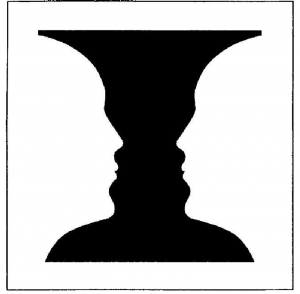

 “…and here’s a secret for you – everything beautiful is sad…gilded with impermanence…”
“…and here’s a secret for you – everything beautiful is sad…gilded with impermanence…”  The main way language traps us is by cementing, consolidating, and solidifying a mood, emotional state, thought, or body sensation. For example, while writing this, I notice that I am feeling tired and a little bit queasy. If I put this into words (“I’m feeling tired and a little bit queasy”), until I update that “reading” of my interoceptive environment, it acts like a dualistic off-on switch. What I mean by this is that my mind starts believing that I am either “tired” or “not tired”, “queasy” or “not queasy”. It loses all sense of gradation and perspective. As far as my mind is concerned, tired and queasy become the “last word” on my experience. That inner-reading, delivered through language should really come with a time and date stamp attached to it (“Hey Steve, two seconds ago you registered tired and queasy feelings in your body, but how about now?”), but it doesn’t. The mind gives us these readings as if they were timeless truths about ourselves and the world.
The main way language traps us is by cementing, consolidating, and solidifying a mood, emotional state, thought, or body sensation. For example, while writing this, I notice that I am feeling tired and a little bit queasy. If I put this into words (“I’m feeling tired and a little bit queasy”), until I update that “reading” of my interoceptive environment, it acts like a dualistic off-on switch. What I mean by this is that my mind starts believing that I am either “tired” or “not tired”, “queasy” or “not queasy”. It loses all sense of gradation and perspective. As far as my mind is concerned, tired and queasy become the “last word” on my experience. That inner-reading, delivered through language should really come with a time and date stamp attached to it (“Hey Steve, two seconds ago you registered tired and queasy feelings in your body, but how about now?”), but it doesn’t. The mind gives us these readings as if they were timeless truths about ourselves and the world. My tiredness and queasiness, like all phenomena, is continually changing, even in the space of the time it took me to write this paragraph: sometimes strong, sometimes weak, sometimes noticeable and even oppressive, other times practically unnoticeable, negligible. But the mind, and language freezes or suspends these states in whatever reading was made at the point of noticing the sensation at first, and unless we factor into our reading the notion of impermanence, we might make a prison for ourselves of this thought, especially if the thing we’re focused on (thought, feeling, sensation) has some suffering attached to it.
My tiredness and queasiness, like all phenomena, is continually changing, even in the space of the time it took me to write this paragraph: sometimes strong, sometimes weak, sometimes noticeable and even oppressive, other times practically unnoticeable, negligible. But the mind, and language freezes or suspends these states in whatever reading was made at the point of noticing the sensation at first, and unless we factor into our reading the notion of impermanence, we might make a prison for ourselves of this thought, especially if the thing we’re focused on (thought, feeling, sensation) has some suffering attached to it.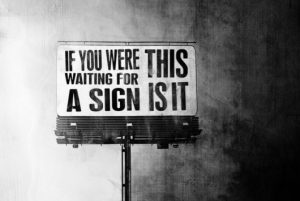 Maybe it would be good, like the king in the Sufi fable, to have a magic spell of sorts, a talisman, something that unhooks or unchains us from the inflexibility of our own, and others’ linguistic formulations, returning us to the light-and-shade flux of our lived experience?
Maybe it would be good, like the king in the Sufi fable, to have a magic spell of sorts, a talisman, something that unhooks or unchains us from the inflexibility of our own, and others’ linguistic formulations, returning us to the light-and-shade flux of our lived experience?
 On the merry-go-round of the mind there is a problem with speed as much as anything else: the whirring thoughts and feelings, the jarring, jangling music. So first of all, cut the power switch the merry go round off for a moment. Stop it. Imagine all the lights expunged, the music silenced, the painted wooden horses in shadow.
On the merry-go-round of the mind there is a problem with speed as much as anything else: the whirring thoughts and feelings, the jarring, jangling music. So first of all, cut the power switch the merry go round off for a moment. Stop it. Imagine all the lights expunged, the music silenced, the painted wooden horses in shadow. Again, see if you can identify your bundle of feelings and thoughts that have got you “locked into” the seat or cage of the ferris wheel: “Oh, there’s shame, and hurt, and frustration. Oh there’s why-can’t-they-respond-as-I-wish-them-too?” etc.
Again, see if you can identify your bundle of feelings and thoughts that have got you “locked into” the seat or cage of the ferris wheel: “Oh, there’s shame, and hurt, and frustration. Oh there’s why-can’t-they-respond-as-I-wish-them-too?” etc. Unlike merry-go-rounds and ferris wheels, tubes and trains usually have destinations associated with them. Consider where the cluster of thoughts and feelings and sensations you are currently experiencing may lead if you hop on the bus, or train, or plane and fly with them. Maybe even imagine that destination written on the front of the train or the plane.
Unlike merry-go-rounds and ferris wheels, tubes and trains usually have destinations associated with them. Consider where the cluster of thoughts and feelings and sensations you are currently experiencing may lead if you hop on the bus, or train, or plane and fly with them. Maybe even imagine that destination written on the front of the train or the plane. Thanks for reading. Oh, and if you’re struggling with thoughts, feelings, body sensations, or situations that seem to your mind particularly oppressive and imprisoning, other than some of the suggestions presented above, you might also want to consider
Thanks for reading. Oh, and if you’re struggling with thoughts, feelings, body sensations, or situations that seem to your mind particularly oppressive and imprisoning, other than some of the suggestions presented above, you might also want to consider  Why is it that Pastor Rick Warren’s (2002) book
Why is it that Pastor Rick Warren’s (2002) book  Tim Smith writes in his book
Tim Smith writes in his book  So rather than the ruthless and totalitarian narratives, what we ultimately need is a capacity for incapacity, for being animals (Great Apes) rather than gods.
So rather than the ruthless and totalitarian narratives, what we ultimately need is a capacity for incapacity, for being animals (Great Apes) rather than gods. 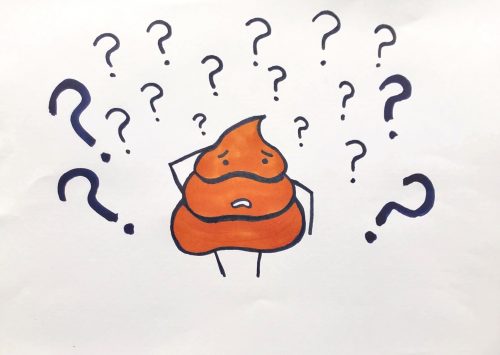

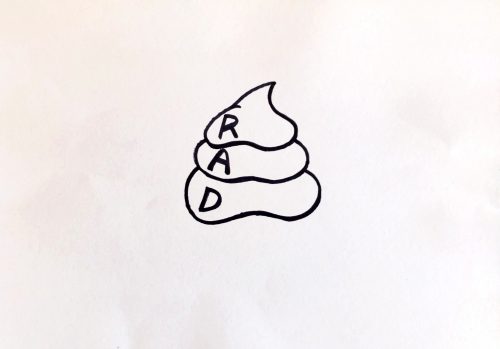
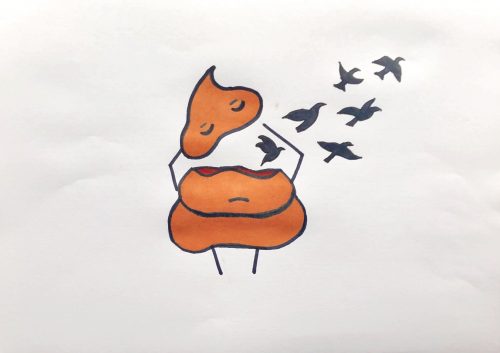
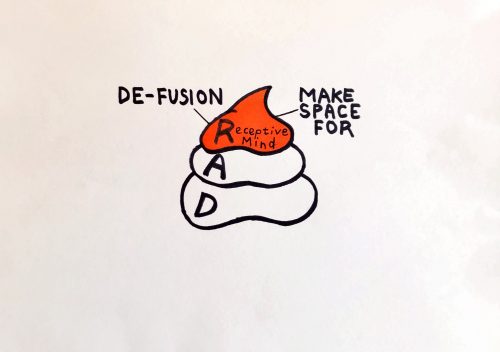
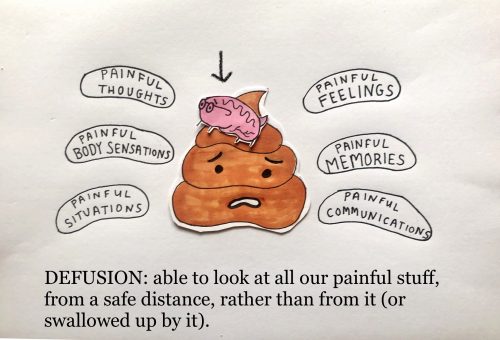
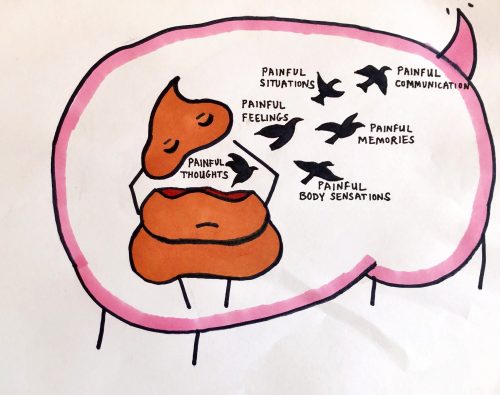
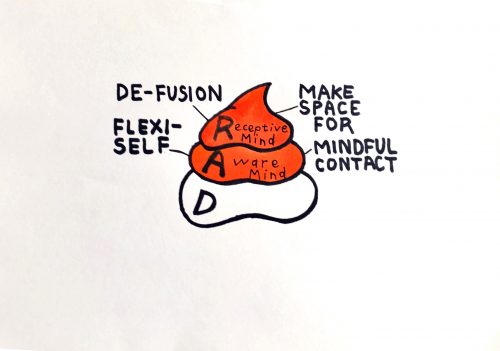
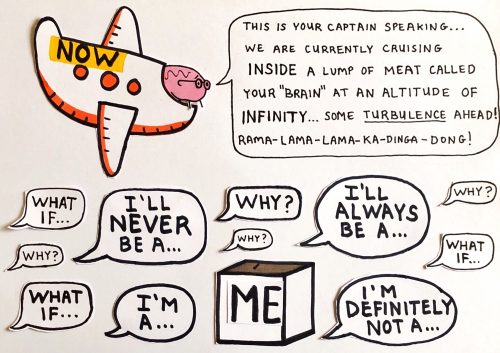
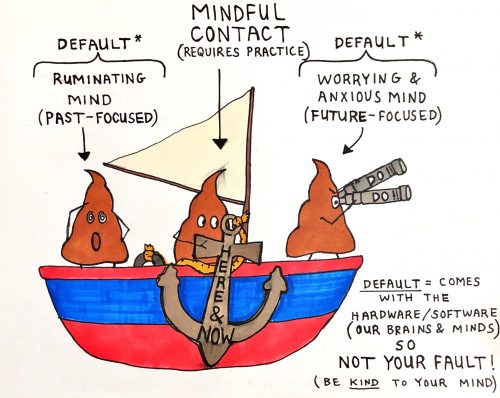
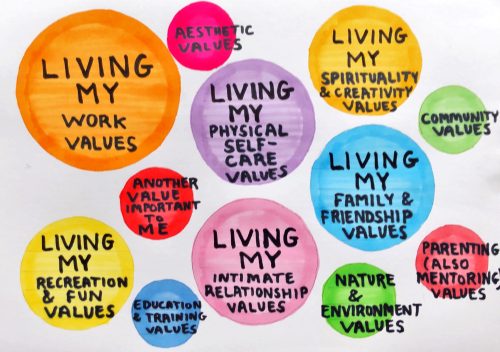
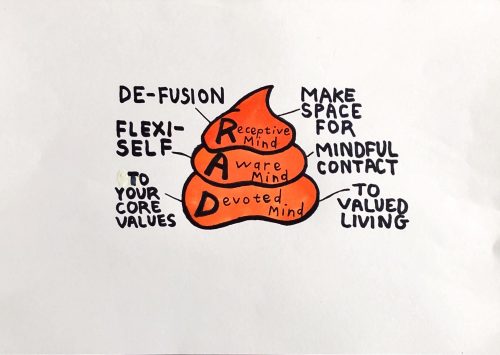
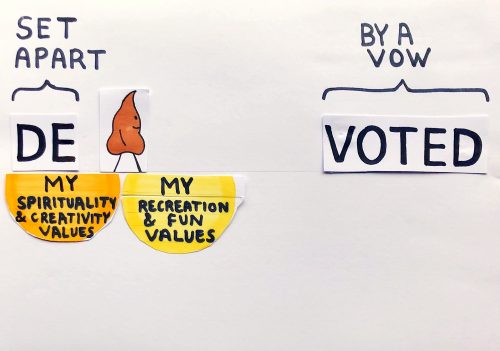
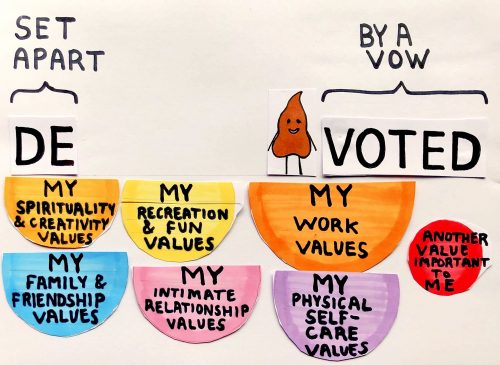
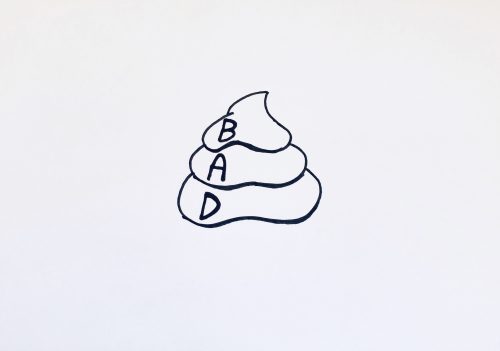
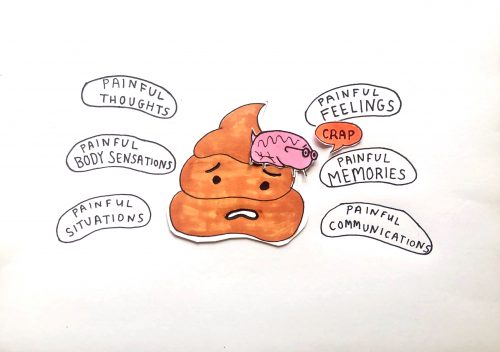
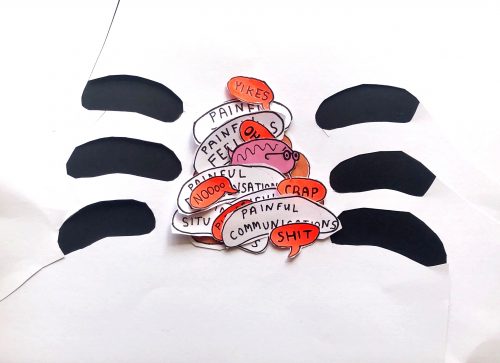
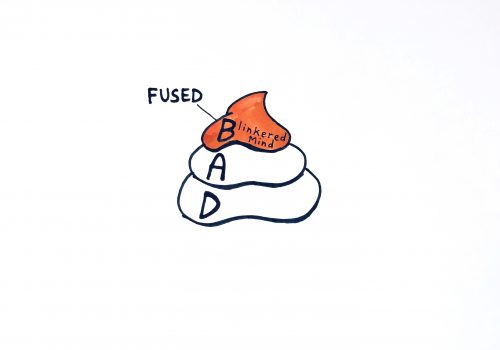 Also, because pain in any shape or form is so uh painful, our suffering Blinkered Minds will often try to avoid this pain in a very intuitive way.
Also, because pain in any shape or form is so uh painful, our suffering Blinkered Minds will often try to avoid this pain in a very intuitive way.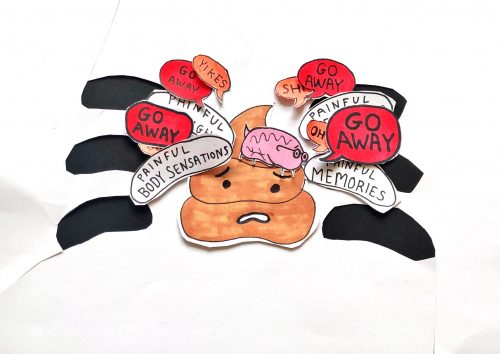
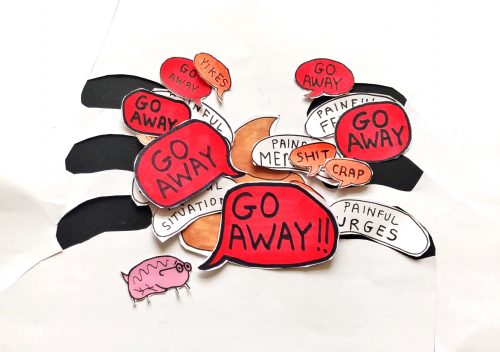
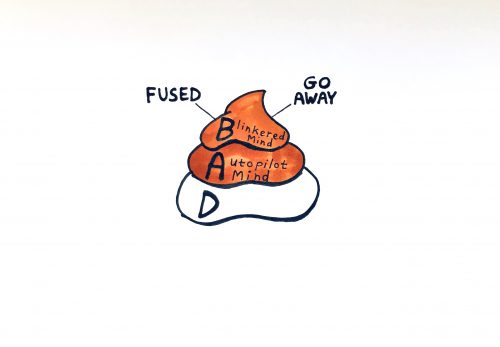
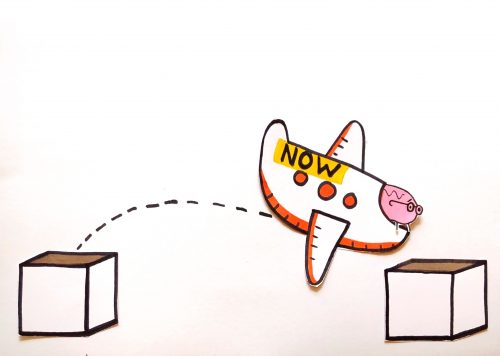
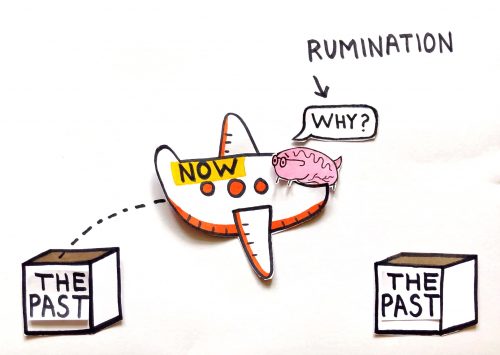
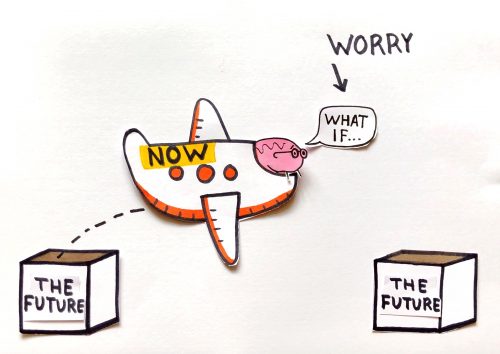
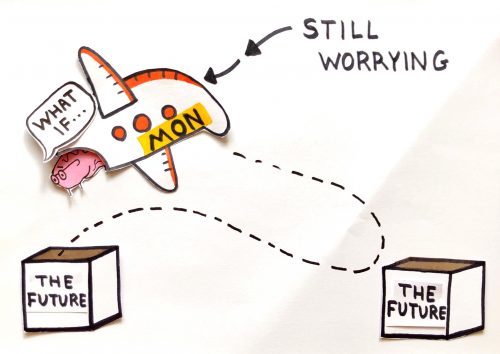
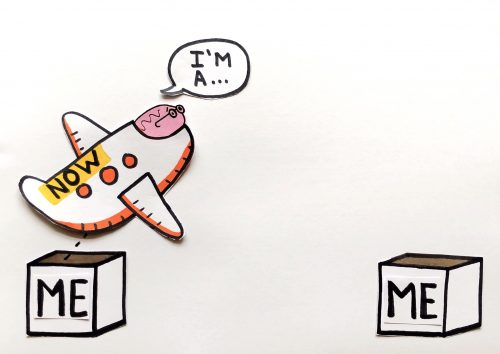
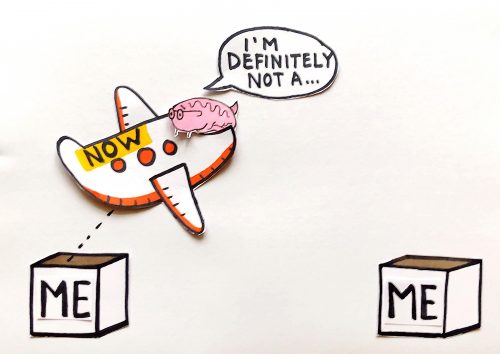
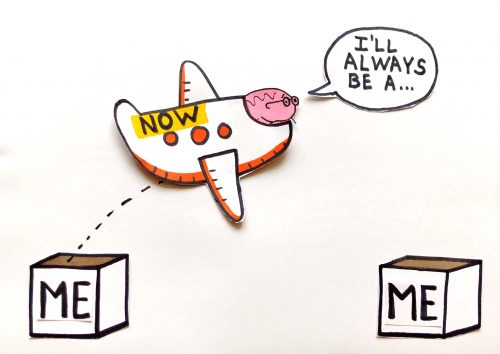
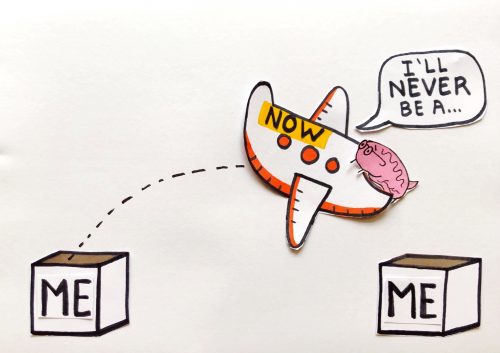
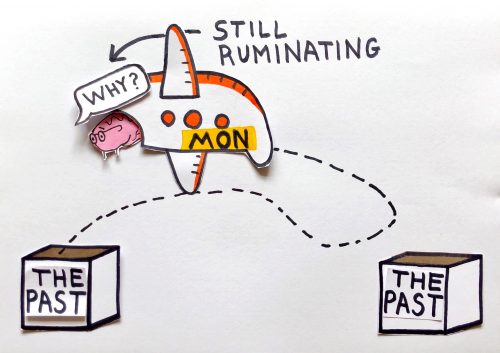
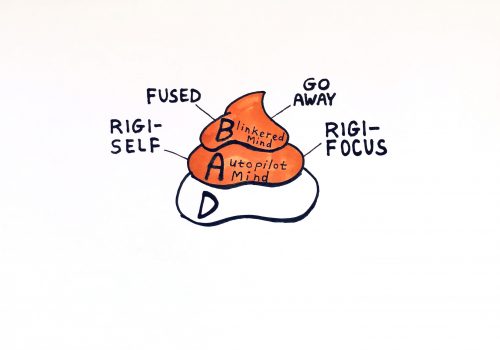
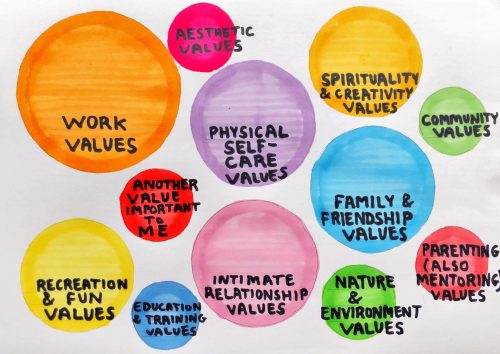
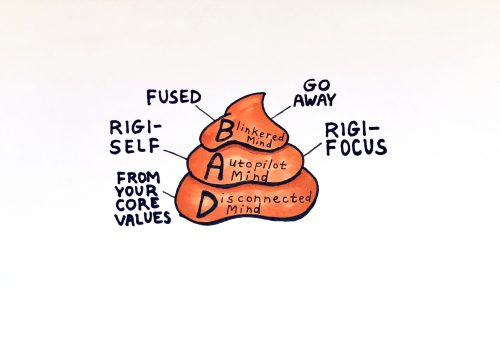
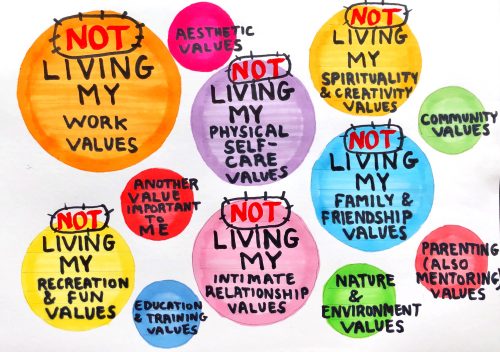
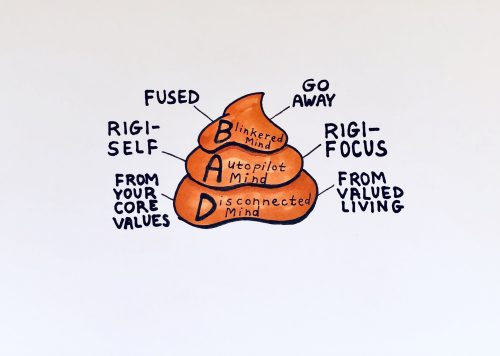

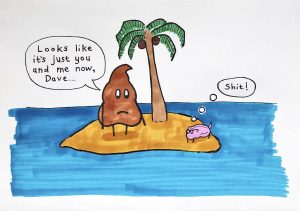
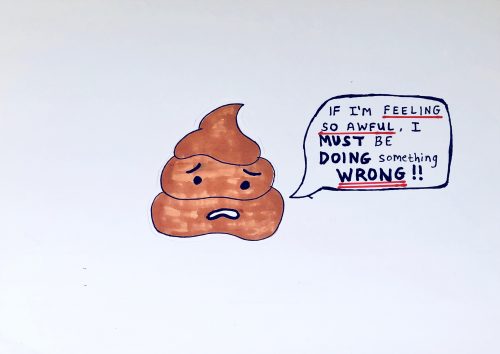
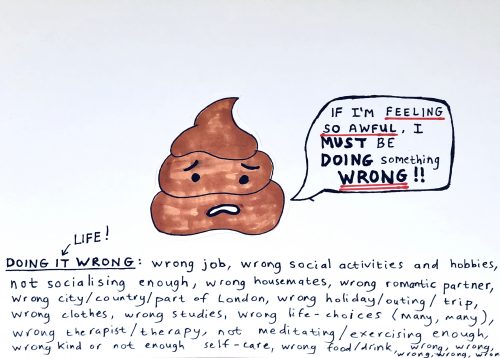
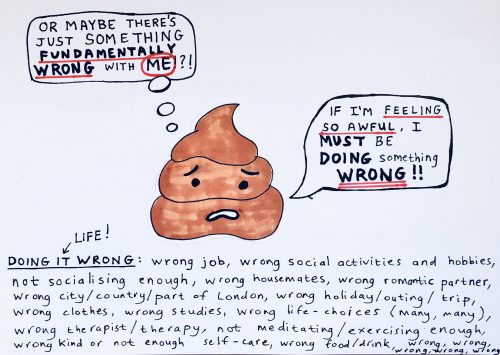
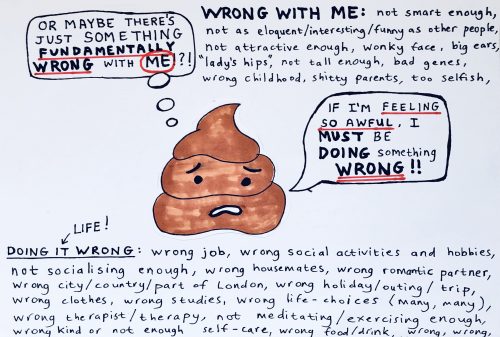



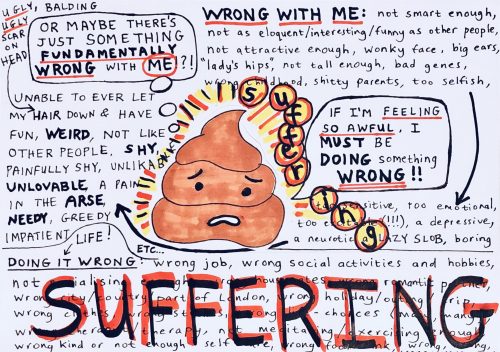
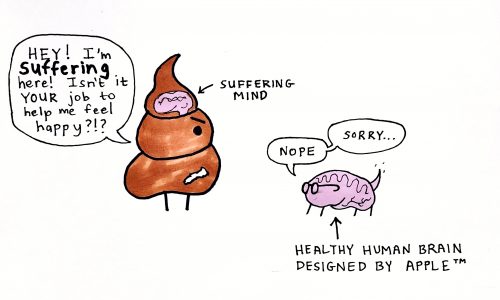 He’s right though.
He’s right though.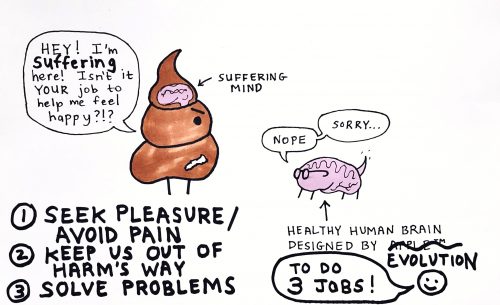
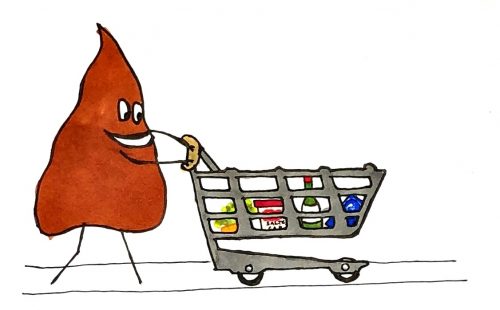 I’m also relieved to have seen and avoided my neighbour – the one I had an argument with with last week who I spotted walking down another aisle. Whew, and another dopamine hit of pleasure!
I’m also relieved to have seen and avoided my neighbour – the one I had an argument with with last week who I spotted walking down another aisle. Whew, and another dopamine hit of pleasure!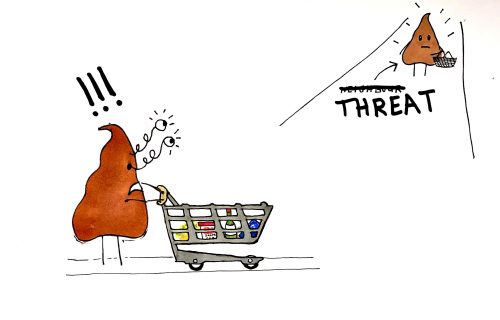 But maybe that evening I eat the whole tub of Hagen Daz as I am wont to do and drink most of the wine and feel sick and full of self-loathing.
But maybe that evening I eat the whole tub of Hagen Daz as I am wont to do and drink most of the wine and feel sick and full of self-loathing.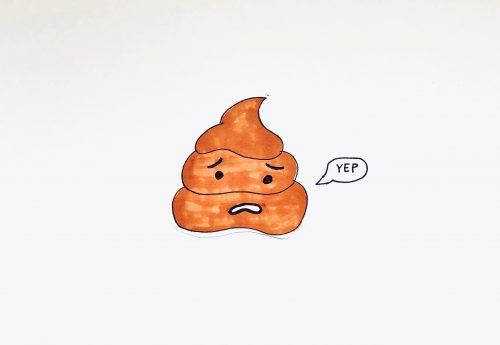
 In many ways, I love being the butt of someone’s joke, I love to be duped and fooled. Love magic tricks, especially of the Derren Brown variety that always reveal something profound to us about ourselves and others. As well as entertaining us in the process of fooling us.
In many ways, I love being the butt of someone’s joke, I love to be duped and fooled. Love magic tricks, especially of the Derren Brown variety that always reveal something profound to us about ourselves and others. As well as entertaining us in the process of fooling us.  But the ultimate April Fool is the fool our minds make of us on a daily basis. Never out of pure malice – for how can a lump of meat, the brain, sitting between our ears bear malice towards us? Rather, as a function of their problem-solving, pleasure-seeking, pain-avoiding programming. Every time my mind tells me that the reason so-and-so didn’t respond to my text message is because a) they don’t care about me or what I’ve written to them, or b) they don’t fundamentally like me, or whatever other narrative they come up with, and I buy into that and suffer. Again:
But the ultimate April Fool is the fool our minds make of us on a daily basis. Never out of pure malice – for how can a lump of meat, the brain, sitting between our ears bear malice towards us? Rather, as a function of their problem-solving, pleasure-seeking, pain-avoiding programming. Every time my mind tells me that the reason so-and-so didn’t respond to my text message is because a) they don’t care about me or what I’ve written to them, or b) they don’t fundamentally like me, or whatever other narrative they come up with, and I buy into that and suffer. Again: 
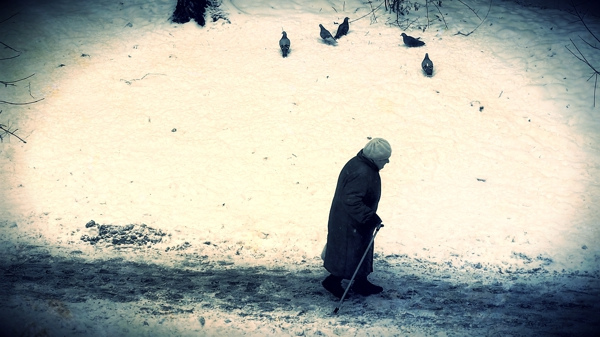
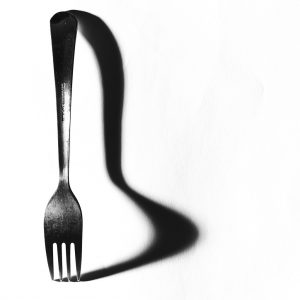 At the moment, I wake up to jackhammers and drills.
At the moment, I wake up to jackhammers and drills.  We need to skilfully differentiate between what is in our power and what is not. And that very differentiation happens to be the first thing we read about in a book of collected discourses issuing from the lips and the mind of a crippled, Roman slave named Epictetus who lived 2000 years ago. I like to imagine him as a slightly more philosophical and Latin-spouting version of
We need to skilfully differentiate between what is in our power and what is not. And that very differentiation happens to be the first thing we read about in a book of collected discourses issuing from the lips and the mind of a crippled, Roman slave named Epictetus who lived 2000 years ago. I like to imagine him as a slightly more philosophical and Latin-spouting version of 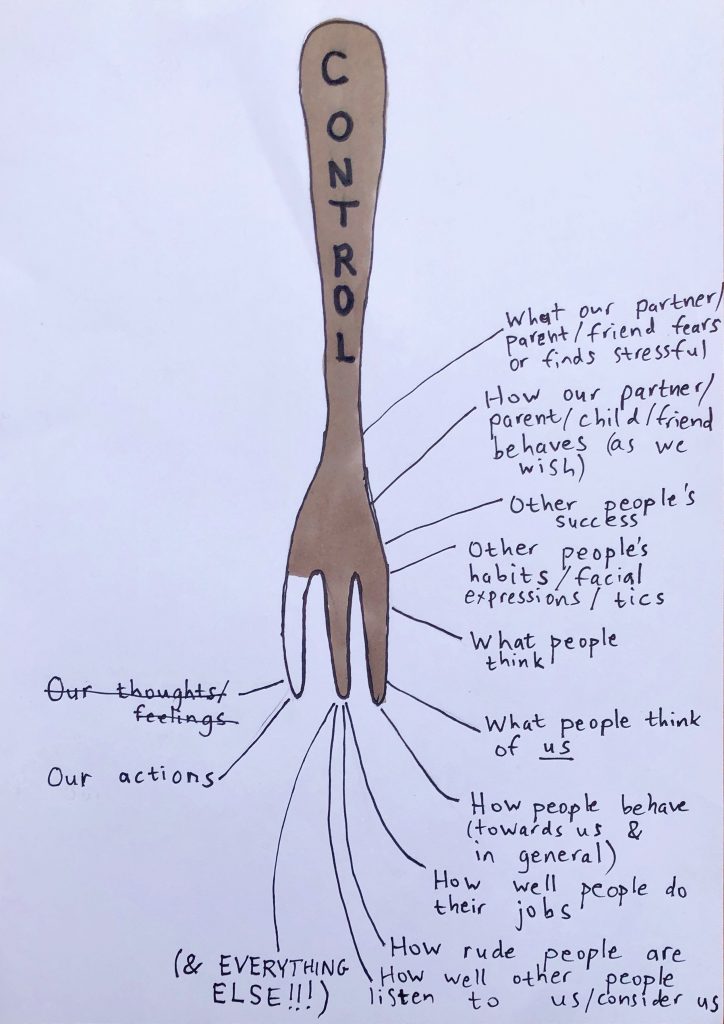

 Anxiety is such a nebulous word, but worry is tangible. Take Louis*. Louis is 28 years old and in charge of a small team of people in the NHS. One of Louis’s team, let’s call him Phil, is slacking off at work. He consistently arrives late and does as little as possible. This is complicated by the fact that Phil’s previous line manager, Geoff, was also Phil’s friend, and so would turn a blind eye to Phil slacking off. Louis, the new line manager, needs to step in and have a meeting with Phil next week, setting out what’s expected of him in his role, and also warning Phil that if he isn’t able to fulfil these duties, there might be consequences. Simples, right?
Anxiety is such a nebulous word, but worry is tangible. Take Louis*. Louis is 28 years old and in charge of a small team of people in the NHS. One of Louis’s team, let’s call him Phil, is slacking off at work. He consistently arrives late and does as little as possible. This is complicated by the fact that Phil’s previous line manager, Geoff, was also Phil’s friend, and so would turn a blind eye to Phil slacking off. Louis, the new line manager, needs to step in and have a meeting with Phil next week, setting out what’s expected of him in his role, and also warning Phil that if he isn’t able to fulfil these duties, there might be consequences. Simples, right? The problem with the amgydala is that unlike the cortex, all of its work is largely unconscious, attaching anxiety (negative emotional valence) to situtations the way the liver aids digestion, or the pituitary gland regulates our hormones. And it happens so quickly. Like a hyper-vigilant set of all-seeing, all-hearing, all-sensing cameras, as soon as the amygdala picks through its lateral nucleus and thalamus on something that may indicate a certain level of danger or harm (and remember, doubt, which is to say anything ambivalent, ambiguous, unsettled, which are most things, signals to a mind predisposed to anxiety DANGER). Then, in less than a tenth of a second, much quicker than the danger signal takes to reach the more measured, “thinky” parts of the brain, the amygdala is already signalling to the sympathetic nervous system (SNS) and hypothalamus to provide a surge of adrenaline, increase blood pressure and heart rate, create muscle tension, and get us ready to self-protectively fight, flee, freeze, or worry.
The problem with the amgydala is that unlike the cortex, all of its work is largely unconscious, attaching anxiety (negative emotional valence) to situtations the way the liver aids digestion, or the pituitary gland regulates our hormones. And it happens so quickly. Like a hyper-vigilant set of all-seeing, all-hearing, all-sensing cameras, as soon as the amygdala picks through its lateral nucleus and thalamus on something that may indicate a certain level of danger or harm (and remember, doubt, which is to say anything ambivalent, ambiguous, unsettled, which are most things, signals to a mind predisposed to anxiety DANGER). Then, in less than a tenth of a second, much quicker than the danger signal takes to reach the more measured, “thinky” parts of the brain, the amygdala is already signalling to the sympathetic nervous system (SNS) and hypothalamus to provide a surge of adrenaline, increase blood pressure and heart rate, create muscle tension, and get us ready to self-protectively fight, flee, freeze, or worry.  Here’s your proverbial AHA! moment in dealing with worry. This is an acronym you can use to help you remember a couple of steps to take when you’re being bothered by worrisome thoughts.
Here’s your proverbial AHA! moment in dealing with worry. This is an acronym you can use to help you remember a couple of steps to take when you’re being bothered by worrisome thoughts.